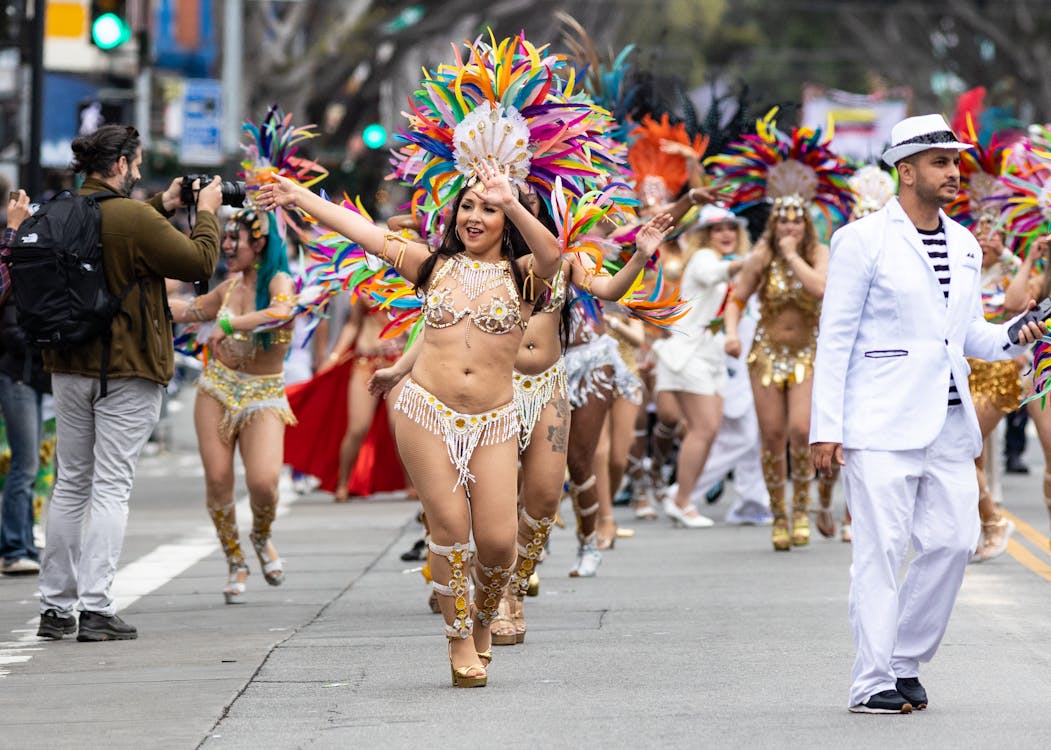The Rio de Janeiro Carnival is one of the most iconic and dazzling cultural events in the world. Every year, as February approaches, online searches for the event’s dates and special activities increase.
When is the Rio de Janeiro Carnival?
It’s important to note that the Carnival date is not fixed each year. However, it usually falls between late February and early March.
The Carnival is celebrated each year just before Lent, following the Catholic calendar. However, the city starts to pulse to the rhythm of samba weeks before, with rehearsals and pre-events.
The highlight of the festival is the grand parade at the iconic Sambadrome Marquês de Sapucaí, where the most prestigious samba schools compete to deliver the most spectacular show. The final nights of the festival are usually reserved for these competitions, featuring extravagant costumes, monumental floats, and flawless choreography.
If you want to immerse yourself in the Carnival spirit and feel in sync with Brazil’s festive essence, Tangol offers fun beginner samba classes in Copacabana to get you ready.

Rio Carnival: Samba as the Star of the Show
The soul of Rio’s Carnival is samba, the infectious rhythm that unites everyone. From the samba schools parading in the Sambadrome to the blocos de rua (street parties), music fuels every corner of the city during these days.
The Sambadrome Parades
The Sambadrome parades are the main event and an unmissable spectacle. Each samba school presents a theme, known as enredo, often inspired by history, culture, or current issues. Giant floats, elaborate costumes, and energetic dancers create a magical atmosphere that transports the audience.
Tourists can buy tickets with different price options—from affordable grandstand seats to exclusive VIP boxes with premium services. If you plan to attend, it’s best to purchase your tickets in advance due to high demand. You can get tickets for the samba school parades on Tangol’s website.
The Street Blocos
While the Sambadrome offers a structured experience, the blocos de rua represent the spontaneous and free-spirited side of Carnival. These street parties gather thousands of costumed revelers dancing to live bands and DJs. Some of the most famous blocos, like Cordão do Bola Preta and Bloco das Carmelitas, are true Carioca institutions.
Each Rio neighborhood has its own blocos, and the best part is that most are free and open to the public. It’s a great opportunity to mingle with locals and experience the authentic Carnival spirit.
How to Prepare for the Best Experience
To make the most of Rio’s Carnival, proper planning is essential. Here are some tips:
- Book in advance: Flights and accommodations in Rio de Janeiro sell out quickly during this season. Secure your spot at least three months ahead.
- Plan your activities: Decide whether you want to attend the Sambadrome, join the blocos, or combine both experiences. You can also explore parallel events like private parties and themed shows.
- Dress comfortably: The summer heat in Rio can be intense. Wear light clothing, use sunscreen, and always carry water to stay hydrated.
- Stay safe: Be mindful of your belongings and avoid carrying valuables. Crowds can be overwhelming, but with precautions, you can enjoy the event worry-free.
The Cultural and Economic Impact of Carnival
Rio’s Carnival is not just a spectacle—it’s also an economic and cultural powerhouse. Each edition generates thousands of direct and indirect jobs in tourism, gastronomy, transportation, and costume-making. Additionally, it provides a platform for local communities and samba schools to showcase their talent and creativity to the world.
More importantly, the event is a reminder of Brazil’s deep cultural roots. Born in Afro-Brazilian communities, samba is a symbol of resistance, diversity, and shared joy.
Tangol’s tours and travel packages in Rio de Janeiro are designed to give you an unparalleled experience in the Carioca city. Explore the options and get ready to travel!